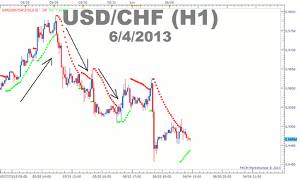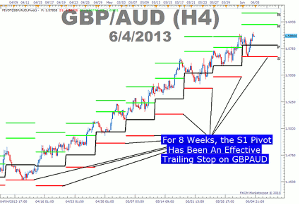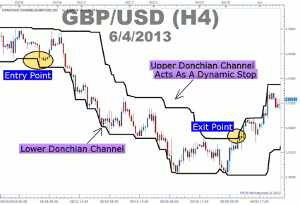It’s been said that good traders locate high-probability entries while great traders identify exits, writes Tyler Yell of DailyFX.com, and here he breaks down exit methods that will protect your hard-earned trading capital.
If a trader doesn’t place stops nor has a grasp on position size, she or he won’t be a trader for long. Many seasoned traders have found stop placement to be a key point in their strategy that has taken their trading to a higher level. However, getting to this higher level is often a difficult journey that can involve being whipsawed by your trade hitting its exit point right before launching to your intended target.
While there are many challenges for trading correctly with stops, the subject is worth pursuing further so you can protect your well-calculated entries. It’s important to note that there is no one-size-fits-all method when placing stops. A short-term trader would be better served exiting on strength with a definitive time horizon, whereas a long-term trader would do well to hold onto their trade until the trend has shifted.
Defining When to Exit Beforehand
In 1957, Gerald Loeb wrote the iconic, Battle for Investment Survival, which makes the valid argument that increasing and protecting your trading capital is a “battle.” To fight this battle, Gerald recommends a 10% equity stop so that you’re account isn’t decimated from a bad decision. While we at Daily recommend a 5% stop, the point is the same in that you need to define an exit before you’re overly emotional with the trade because your money is at risk.
The most common methods for exiting a trade are as follows:
Hard Price Stops: This is a no-excuse price exit. If price pushes against your trade to this point, you exit the trade with no questions asked. There are different ways of determining the price exit such as the average true Range but as you can imagine, there’s very little (if anything) preventing the market from hitting this level before moving on in the direction you perceived it would go that caused you to enter the trade in the first place.
Trailing Stop: Trailing stops come in multiple forms but their purpose is the same. Trailing stops allow the trader who has identified a good entry to cut his losses while letting his profits run in the direction of his profit target. The downfall of this method is that trend corrections can take you out of the trade before continuing to your original profit target.
NEXT PAGE: Avoiding Most “Whipsaws”
|pagebreak|Parabolic SAR: The Parabolic SAR (PSAR) is a great tool in that when the trend moves quickly in favor of your trade, the PSAR adjusts quickly to keep pace with rising prices. However, because PSAR adjusts so quickly to a big move, you can often be taken out at a normal correction. The biggest headache about this method is that if a market is a bit choppy before a big move, the PSAR will stop you out for a handful of small equity losses before you get into the big move.
PSAR applied to H1 USD/CHF Chart

Presented by FXCM’s Marketscope Charts
Click
to Enlarge
As you can see above, the red dots are recommended points to set a stop on a short trade. The arrows drawn manually show you where you would have been in the trade but then you see a few green dots below price, which are quickly taken out by price and would have resulted in the dreaded “whipsaw.” Avoiding whipsaws is an art and something traders should focus a majority of their attention so you’re not exiting on normal price action.
Avoiding Most “Whipsaws”
There is no one way to avoid all whipsaws and therefore you should focus on trying to cut out most whipsaws, which are often a result of stops placed too tightly. Earlier, it was mentioned the short-term traders should likely exit on strength whereas longer-term traders may want to stay in a momentum trade longer to try and squeeze all they can from the move. Two preferred methods to avoid whips are to either place a stop exit below a pivot point or counter-trend support in an uptrend (opposite for downtrend) or through the use of Donchian Channels also known as the Turtle Trading Method.
Pivot Levels as Stop Exits

Presented by FXCM’s Marketscope Charts
Click
to Enlarge
20-Period Donchian Channel Exits

Presented by FXCM’s Marketscope Charts
Click
to Enlarge
Identify a Reentry Point
The purpose of identifying a reentry point after a stop-out is that you don’t want to miss out on a reloaded move back in the direction of the trend. Also, if you are on guard, then you can likely re-enter the move at a better price if a trailing stop has taken you out at a profit. Many traders will continue taking reentries until they hit a string of losses because the trend is in reversal mode.
Closing Thoughts
Because trends never move in a straight line, once an entry has been identified, the next logical key point is where you will exit. This article has examined many methods to help you manage risk amidst the volatility that this market is well known for. A reentry plan combined with smarter stops will benefit you in the long run so that the occasional whipsaws will be just that, occasional.
By Tyler Yell, Trading Instructor, DailyFX.com





















